

Designation:Veritech Alpha Fighter VF-6 (A, B, C, D, E, F, G, H, I, J, S, Z) |
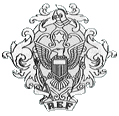
|
||||
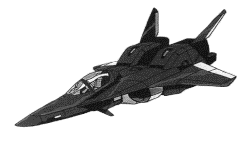
|
|||||
| Fighter | Guardian | Battloid | |
|---|---|---|---|
| Total Length : | 10.25m | 8.00m | - |
| Total Depth : | - | - | 5.25m |
| Total Height : | 4.60m | 5.72m | 8.75m |
| Total Breadth : | - | 4.84m | 4.84m |
| Total Wingspan : | 8.20m | - | - |
| Total Dry Weight: | 16.85 tons (metric) (VF-6A, -6B, -6C) | ||
| 17.05 tons (metric) (VF-6E, -6F) | |||
| 16.70 tons (metric) (VF-6H, -6I, -6Z) | |||
| 17.15 tons (metric) (VF-6S) | |||
| Fighter | Guardian | Battloid | |
|---|---|---|---|
| Total Length : | 12.5m | 10.25m | - |
| Total Depth : | - | - | 5.50m |
| Total Height : | 4.60m | 5.72m | 9.00m |
| Total Breadth : | - | 4.84m | 4.84m |
| Total Wingspan : | 8.20m | - | - |
| Total Dry Weight: | 17.60 tons (metric) (VF-6D) | ||
| 18.35 tons (metric) (VF-6G, -6J) | |||
| -6A, -6B, -6E, -6F | -6C | -6D, -6G | -6H, -6I, -6S | -6J | -6Z | ||
|---|---|---|---|---|---|---|---|
| • Max level speed (@ 18km) | : | 1890 kph (Mach 2.1) | 2160 kph (Mach 2.4) | 1845 kph (Mach 2.05) | 2070 kph (Mach 2.3) | 2025 kph (Mach 2.25) | 2250 kph (Mach 2.5) |
| (@ sea level) | 970 kph | 1150 kph (~Mach 1.2) | 920 kph | 1100 kph (~Mach 1.05) | 1050 kph (~Mach 1.0) | 1200 kph (~Mach 1.3) |
|
| • Stall speed | : | 182 kph (VTOL rectification possible) | |||||
| • Initial climb rate | : | over 20000m per minute | |||||
| • Unboosted service ceiling | : | 26 km | |||||
| -6A, -6B, -6E, -6F | -6C | -6D, -6G | -6H, -6I, -6S | -6J | -6Z | ||
|---|---|---|---|---|---|---|---|
| • Max level speed (@ 10m) | : | 665 kph | 750 kph | 650 kph | 680 kph | 670 kph | 775 kph |
| • Stall speed | : | None (VTOL) | |||||
| • Service ceiling | : | 15km | |||||
| -6A, -6B, -6E, -6F | -6C | -6D, -6G | -6H, -6I, -6S | -6J | -6Z | ||
|---|---|---|---|---|---|---|---|
| • Max running speed | : | 110 kph | 125 kph | 110 kph | 120 kph | 120 kph | 140 kph |
| • Max flying speed (@ 10m) | : | 304 kph | 345 kph | 300 kph | 312 kph | 310 kph | 368kph |
| • Service ceiling | : | 200m | 300m | 200m | 200m | 200m | 300m |
| Aerospace Models | Air-Optimized Models (-6C,-6Z) | ||
|---|---|---|---|
| • Combat radius (space) | : | total delta-v 1.8 kps, with internal reaction mass only. | 1.0 kps |
| One extra tank for 4.1 kps delta-v can be attached externally. | |||
| • Protoculture supply | : | 250 hours operational use. | |
| • Design G limits | : | +11.5/-5.0 (Computer overrides at 9.5g) | |
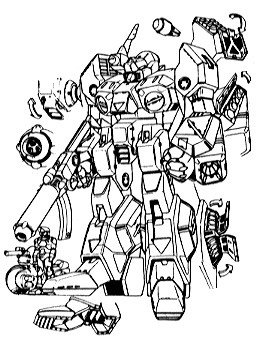
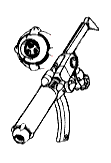
Cannons:
|
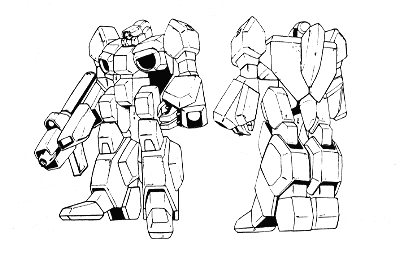
|
| Location | Missiles | Modes available |
|---|---|---|
| 1/ shoulder(2) | 8 ea. | F,G,B |
| 2/ arm(4) | 5 ea. | G,B |
| 2/ outside of leg(4) | 4 ea. | G,B |
| 1/ inside of leg(2) | 4 ea. | F,G,B |
| (F = Fighter, G = Guardian, B = Battloid mode) | ||
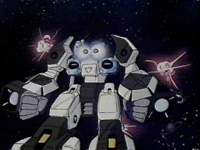
The armor on the Alpha series fighters is a new development in low-mass composite-materials Chobham plating that became the standard for all Terran mecha after its application to the VQ-6A Vandal. Aside from the respectable protection provided against projectiles, missiles, and other kinetic weapons, this armor is also resistant to plasma globes (annihilation discs), lasers, and to a lesser extent, particle guns, owing to the fact that the armor can flake off and evaporate in layers under fire from such high-energy weapons, taking much of the weapon's energy and converting it into the latent heat of sublimation in the armor. The armor stops all small arms and heavy infantry weapons fire, provides good to excellent resistance to light mecha-mounted weaponry, such as the Zentraedi 22.3mm HE autocannon round, and poor to good resistance to medium mecha-mounted weaponry, such as the Valkyrie's 55mm APFSDS round.
The armor on the VF-6A, -6B, -6C, and -6D Alphas is marginally inferior to that mounted on the later VF-6 models.
The Alpha provides full protection from nuclear, biological, and chemical hazards, using a sealed cockpit environment activated by radiation and hazardous chemical sensors, or manually when biological warfare conditions are anticipated. The internal consumables supplies can provide atmosphere for one day maximum.
The VF-6 series of fighter planes are perhaps the most effective air-superiority aircraft in known space. This has resulted from the commitment of the RDF to hold quality in as high or higher regard as quantity. The plane was originally conceived in 2011, in large part inspired by the newly-designed VF-4A Lightning with its large store of internal missiles, to serve the RDF as the main front-line general-purpose combat aircraft in its forces.
March of 2015 saw the introduction of the VX-6 pilotless Alpha. This non-transformable aircraft was originally intended to test the aerodynamic capabilities of later Alpha designs. The RDF Air Force was so impressed with this vehicle, however, that it ordered it armed and procured seven hundred of these mecha to replace the aging QF-3000E Ghost drone fighters in many of their squadrons. The armed version of the VX-6 was designated the VQ-6A Vandal and saw service in the UNAF and Expeditionary Forces (EF) from 2016 to 2030. The first fully transformable production version of the Alpha was rolled out in May of 2017, and it was designated the VF-6A. The plane had superior maneuverability and armament, and the avionics package was unmatched for its time. Several thousand of these planes were ordered by the UNDF Air Force, Spacy, and Navy, and the EF Planetary Forces and Fleet Operations.
The Alpha is, above all, an air superiority fighter, but is also an excellent general-purpose ground-attack plane. It was acquired for these roles by the EF Planetary Forces, and as an anti-mecha space fighter by the EF Navy. The Alpha's place in fleet defense came later, in the mid 2030's, as the Alpha/Beta "Legioss" combination began to replace the venerable AF-1B Vultures, whose heavy forward-firing beam guns and heavy missiles were not particularly well suited to Invid numbers and tactics. The Alpha is not trans-atmospheric, but functions excellently in space once it is brought there. With its impressive array of short range missiles and cannon, the Alpha contains as much firepower as a squadron of older planes, and its versatility is further improved by the fact that it is a three-form Veritech. The Battloid is responsive and tough, and can easily best any other mecha, even when outnumbered.
The VF-6A, -6B, -6C, and -6D are the older versions of the Alpha, and were entirely replaced by later versions by about 2026. The VF-6A, -6B, -6C, and -6D used the JG95A for the main engine (effectively identical to that on the AGACS). Likewise, the Battloid is less responsive and the fighters' ACS system a little more sluggish than the succeeding generations of Alpha. In addition, the target and threat detectors were less powerful on the -6A, -6B, -6C, and -6D models, which lacked the advanced sensor/ECM pod that would be mounted to the right shoulder of the Guardian and Battloid modes of the later Alphas.
Soon after the VF-6A's introduction, a new experimental head - optimized for atmospheric operations - was introduced, and this model was known as the VF-6C. This model also sacrificed a significant portion of the reaction mass fuel storage to accommodate a second set of engines optimized for atmospheric use. Unfortunately, the miniaturization technologies of the time would not permit the same amount of equipment in the redesigned head as in the original, and problems developed with JG-96 engine, so the idea was abandoned with only a dozen or so produced, to be later resurrected for the VF-6Z.
Later, a new sensor/ECM pod was mounted on the right collar and better armor utilized to constitute the VF-6E/-6F/-6G variants. Additional improvements were made to the basic electronics suite as well.
When the Beta Fighter was conceived in 2018 and tested in 2022, it became necessary to perform extensive modifications to prototype Alpha fighters to accommodate its linkage with the Beta. Later, when the Beta reached production, the VF-6H, and -6I were introduced to include these linkages. Five versions of the Alpha were still in service with the EF by the 2040's. The VF-6I was the standard EF version, and it possesses some of the best combat computers and fire control of all recent airborne mecha. It also included a new JG97 engines for improved performance and reduced weight. The VF-6H was the command version, with improved C3I gear over the -6I. The VF-6Z is practically identical, though it saw a redesign of the head, based on the old VF-6C concept, and included an engine upgrade, similar to the -6C concept, but with the problems resolved. Because many of the head's components could be substantially miniaturized by the late 2030's, the disadvantages to the experimental head redesign vanished. The revival of the old -6C's head modification placed the dual stereoscopic optics sensors further back on the head and increased the separation between them, for improved frontal stereoscopic imaging. This move also improved the field of view in the periphery of the main optical sensors. Furthermore, the head of the -6Z was augmented by a small ventral vertical stabilizer for improved fighter-mode stability. In all, the improvements were conceived to improve the Alpha's performance in the atmosphere, where threat detection in Battloid mode relies more on visual acquisition and targeting than on instruments, which are more important in the blackness of space. For these reasons, the majority of the -6Z production went to the EF Planetary Alpha wings. Also, field conversion kits were fabricated as early as 2042, substituting new -6Z type heads for the thousands of -6I Alphas in service. However, though full conversion of the Alpha's head was planned, the sheer number in service insured that it was not until the 2050s that all remaining Alphas sported this head. These late-model Alphas also saw the inclusion of a Cyclone emergency vehicle to support downed pilots. Previous versions had to mount a pod on the shoulder hardpoint to include an emergency vehicle, which was usually restricted to planetary special forces operations.
The VF-6D/G/J models were two-man fighter-trainers used by the EF related to the various production generations. These models were also used as the EF's Combat Reconnaissance/Wild Weasel plane, and has extensive sensory equipment, at the expense of additional weight and commensorate loss of manueverability. Nevertheless, it was still a more than competent fighter.
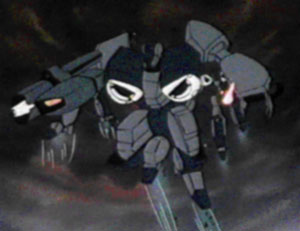
The EF's latest model is a stealth version referred to as the VF-6S, codenamed 'Shadowfighter'. This model was an update to the venerable -6I design to incorporate shadow technology to shield the protoculture emissions from Invid sensors as well as designs to reduce the thermal signature rendering the fighter almost invisible to Invid except at extremely close range. Sensor systems were also updated to reduce emissions and detectability. Visible differences include 3-fingered claws in places of the 5-fingered hands of earlier models, a lack of the groin thruster, and a reshaped main engine intake. |
Go to additional image gallery.
Return to EF Veritech Index.
Return to Robotech Reference Guide Home Page.
Robotech (R) is the property of Harmony Gold. This document is in no way intended to infringe upon their rights.
Content by Pieter Thomassen, Peter Walker, and Rob Morgenstern